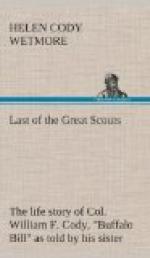Beddoes, however, had no reason to be ashamed of his next publication, The Brides’ Tragedy, which appeared in 1822. In a single bound, he had reached the threshold of poetry, and was knocking at the door. The line which divides the best and most accomplished verse from poetry itself—that subtle and momentous line which every one can draw, and no one can explain—Beddoes had not yet crossed. But he had gone as far as it was possible to go by the aid of mere skill in the art of writing, and he was still in his twentieth year. Many passages in The Brides’ Tragedy seem only to be waiting for the breath of inspiration which will bring them into life; and indeed, here and there, the breath has come, the warm, the true, the vital breath of Apollo. No one, surely, whose lips had not tasted of the waters of Helicon, could have uttered such words as these:
Here’s the blue violet,
like Pandora’s eye,
When first it darkened with
immortal life
or a line of such intense imaginative force as this:
I’ve huddled her into the wormy earth;
or this splendid description of a stormy sunrise:
The day is in its shroud while
yet an infant;
And Night with giant strides
stalks o’er the world,
Like a swart Cyclops, on its
hideous front
One round, red, thunder-swollen
eye ablaze.
The play was written on the Elizabethan model, and, as a play, it is disfigured by Beddoes’ most characteristic faults: the construction is weak, the interest fluctuates from character to character, and the motives and actions of the characters themselves are for the most part curiously remote from the realities of life. Yet, though the merit of the tragedy depends almost entirely upon the verse, there are signs in it that, while Beddoes lacked the gift of construction,




